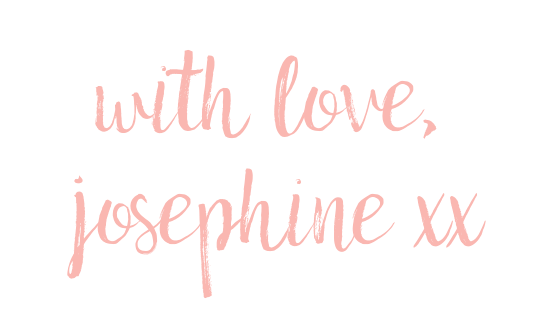Yoga for Bulimia | Yoga Therapy
[Edit: A few readers have been curious as to what inspired this post. Usually for all my other therapy posts, I have a little blurb to introduce it. And for this post, I had originally left it blank. Why? Because I wasn't so sure I was comfortable in publicly posting this where it will be forever shared on the Internet. Because I still carry a shadow of shame for my years suffering from bulimia and body image issues.
With much courage, I've decided to share this because I feel it would speak to more people and raise awareness of this illness. I was once a sufferer of both anorexia and then, recovering from that, bulimia. On and off for about 10 years. But our Almighty God worked His miracles, as He always does and He healed me. Healing wasn't easy but if you believe it will happen, it will.
Now that I've revealed this. I can probably conjure up enough courage to share a little more but in another post. T his post is about is how yoga theraphy CAN actually help in the journey of eating order recovery. And yes, I do know how this feels.]
SPECIFIC ISSUE - BULIMIA
Particularly for sufferers of eating disorders, yoga can help relieve and bring healing to the sufferers. Here, we narrow the study into Bulimics - characterised by those who consume large amounts of foods in a short amount of time, followed by ‘purging’ either through self-induced vomiting or the use of laxatives, commonly resulting from an overwhelming sense of guilt and fear of gaining weight after the excessive food intake. Bulimics are frequently associated with other mental disorders such as anxiety and depression.
THE BENEFITS OF YOGA FOR THIS ISSUE (SYMPTOM CONTROL)
A *study carried out in Australia showed that bulimics who engaged in a 12-week yoga program self-reported reductions in binge eating and increased their physical activity, and a small number of them saw reductions in BMI.
Firstly, the spiritual benefits of Christian yoga for relieving bulimic tendencies is to help the sufferers find peace and comfort in Christ. Starting from this pivotal change in belief can help bulimics realise or reduce the need to ‘purge’ after a binge-eating session through acceptance. From there, they may find it easy to start relying on God’s grace and love for comfort in lieu of the need to ‘binge’ for comfort and satisfaction.
Different breathing techniques adapted to individual circumstances can help the sufferer learn to cope with anxiety. Through deep breathing, which sends signals to the brain for the body to relax, it gives the sufferers an opportunity to reflect and face the root causes of their eating disorder instead of escaping them. Only by addressing the deep-seated issues which are causing the disorder does the sufferer stand a chance of healing and recovering in a sustainable way.
Deep stretching and staying in a challenging yoga pose can help bulimics understand and deal with managing temptation. By training the brain and body to find ways of adapting to a challenging situation, a bulimic can learn the techniques and coping mechanisms to manage the next bout of ‘binge’ temptation.
Most importantly, Christian yoga promotes the importance of handing over the willingness to be healed over to God than the ‘willpower’ of our selves to change the habit, addiction or disorder. Perhaps that willpower was the very culprit that got the bulimic into the disorder in the first place. So, trusting the willpower is a risky choice.
CONTRAINDICATIONS
If diagnosed by medical practitioner as to having low blood pressure, avoid any reclining positions.
If suffering from reflux, avoid any poses that inverts the upper body such as standing forward fold.
If BMI is under a healthy range and protruding bones are causing pain in certain poses, seek advice from your yoga therapist on how to modify poses or whether it is safe to participate.
15-30 MINUTE FLOW
Easy seated (Somatic Method -> Listen to your breath, Watch your belly rise and fall, Lengthen and deepen breaths)
Double pigeon -> Fold forward (Left & Right)
Easy seated (Somatic Method -> Clench fists/Release, Shrug shoulders/Relax -> 1 set of breath each -> Feel the difference)
Seated Forward Fold (Stay for 5 sets of breaths and resist temptation to ‘get out of the pose’)
Seated Open A (Stay for 5 sets of breaths and resist temptation to ‘get out of the pose’)
Bow pose (Open up the heart and chest and release any feelings of shame, guilt or anxiety)
Extended Childs Pose (Somatic Method -> Don’t ‘try’ just relax -> Imagery on the words ’surrender’ & ‘embracing')
Hero Pose (Somatic Method -> Eyes closed and listen only for 3 sets of breaths)
Reclined Hero
Final resting in Reclining Supported Bound Angle (rolled up mat underneath the back at the bottom of the ribs but above the lumbar)
SOURCES & RESEARCH
http://www.yogajournal.com/article/eating-disorders/truth-yoga-eating-disorders/
*Study - 2009 School of Health and Social Development, Faculty of Health, Medicine, Nursing and Behavioural Sciences, Deakin University, 221 Burwood Highway, Burwood, Victoria 3125, Australia- http://www.ncbi.nlm.nih.gov/pubmed/19632546
http://www.mindbodygreen.com/0-6070/How-Yoga-Helped-Me-Recover-From-an-Eating-Disorder.html
*Disclaimer:
These suggestions offered on www.lovejosephine.com are intended to complement and support the medical treatment targeting the specified issue, with the goal of enhancing the well-being of the patient. It is not intended to replace medical recommendations by your medical practitioners. It is highly recommended and, in most cases, essential that you stay compliant to the treatment advice given by a western medical professional. Prior to starting any physical programs, it is advised to get clearance from a medical professional. Upon medical clearance, the suggestions and educational resources offered on www.lovejosephine.com are meant to be observed and used in conjunction with medical treatment but not replace medical treatment.

